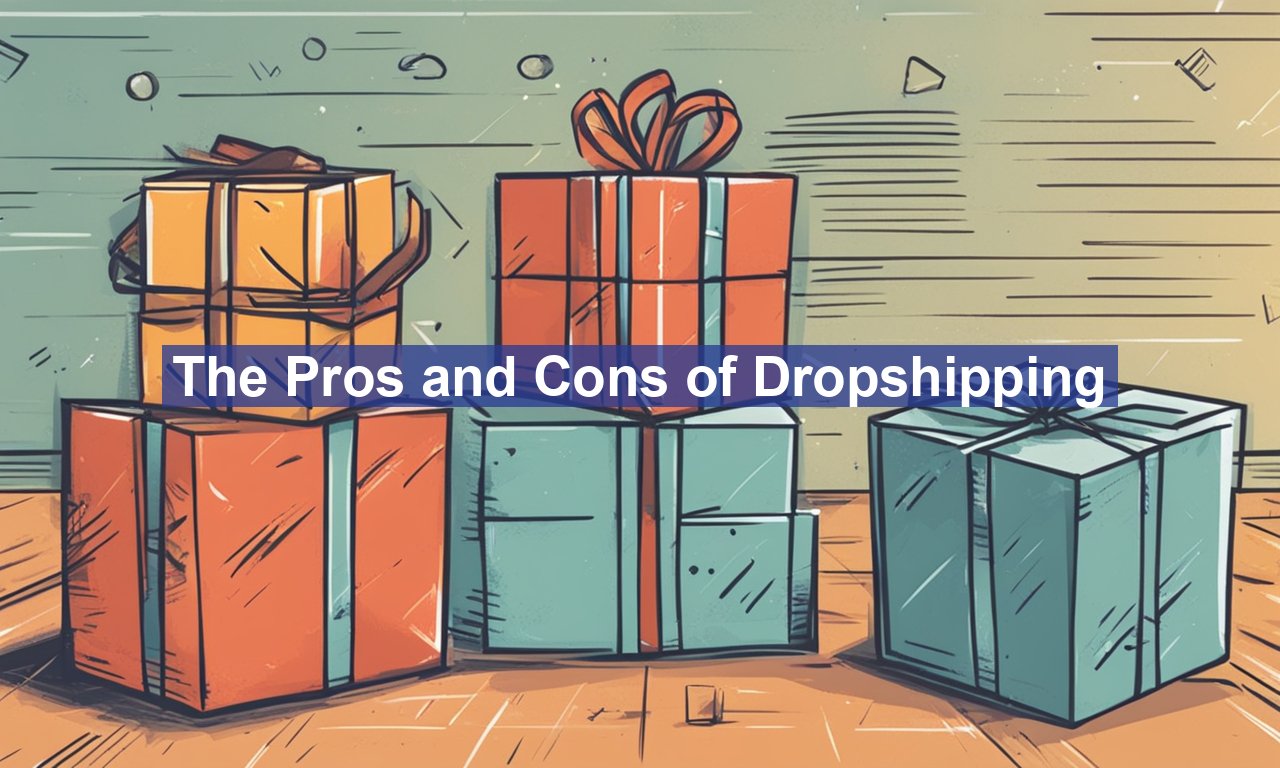The pros and cons of Dropshipping have become a buzzword in the world of e-commerce, often portrayed as the golden ticket to effortless profitability. But while the allure of selling products without ever touching them can be tantalizing, the reality is more nuanced. In this article, we dive deep into the pros and cons of dropshipping, offering a balanced perspective to help you decide if it’s the right business model for you.
The Pros and Cons of Dropshipping
Low Startup Costs
One of the greatest advantages of dropshipping is the low barrier to entry. Unlike traditional retail businesses that require significant capital to purchase inventory, dropshipping allows you to start with minimal upfront investment. This makes it an attractive option for aspiring entrepreneurs who are just starting.
Reduced Risk
Because you don’t need to purchase inventory upfront, you minimize the risk of being stuck with unsold products. This means you can test different niches and products without the fear of massive financial losses.
Scalability
Dropshipping makes it easy to scale your business quickly. You won’t have to worry about warehousing or managing large quantities of inventory as you grow. This enables you to focus more on marketing and customer acquisition.
Location Independence
One of the most appealing aspects of dropshipping is the freedom to operate from anywhere in the world. As long as you have access to the internet, you can manage your business from any corner of the globe. This flexibility is particularly beneficial for digital nomads or those who aspire to travel frequently.
Cons of Dropshipping
Lower Profit Margins
While dropshipping allows you to start with low overhead costs, it often comes with lower profit margins compared to traditional retail models. The difference between the wholesale price and retail price can be slim, and additional fees charged by dropshipping suppliers can further eat into your profits.
Intense Competition
Because it’s so easy to start a dropshipping business, the market is highly competitive. You’ll find yourself competing not only with other dropshipping businesses but also with established retailers and marketplaces. This intense competition can make it difficult to stand out and can drive down prices, further squeezing your profit margins.
Supplier Issues
Your business is only as reliable as your suppliers. Poor-quality products, delayed shipping, and inventory shortages are common issues that can tarnish your reputation and lead to dissatisfied customers. It’s crucial to vet suppliers carefully and establish good communication channels.
Lack of Control
In dropshipping, you’re essentially acting as a middleman. This means you have little to no control over the fulfillment process, product quality, or shipping times. Any issues in these areas can lead to unhappy customers and negative reviews, which are detrimental to your brand’s reputation.
Is Dropshipping Right for You?
So, is dropshipping right for you? It depends on your goals, risk tolerance, and willingness to navigate the challenges that come with the territory. Here are a few questions to consider:
- Are you comfortable with lower profit margins?
- Do you have a solid marketing strategy to stand out in a competitive market?
- Can you handle potential customer service issues caused by supplier problems?
- Are you prepared to invest time in finding and vetting reliable suppliers?
If you answer “yes” to these questions, dropshipping could be a viable business model for you. However, if you’re seeking higher profit margins and greater control over your supply chain, you might need to explore alternative e-commerce models.
Tips for Success in Dropshipping
To mitigate the downsides and maximize the benefits of dropshipping, consider implementing the following strategies:
Choose a Niche Wisely
Selecting the right niche can make or break your dropshipping business. Aim for niches that are not overly saturated but still have a strong demand. Focus on products that can offer good margins and cater to specific audiences.
Build a Strong Brand
Building a recognizable and trustworthy brand is crucial for standing out in a crowded market. Invest in professional website design, create engaging content, and leverage social media to build your brand presence.
Focus on Customer Service
Exceptional customer service can set you apart from competitors. Make sure to keep your customers informed, respond to inquiries promptly, and resolve any issues quickly. A satisfied customer is more likely to return and recommend your business to others.
Continuous Market Research
Stay ahead of trends and continually conduct market research to identify new product opportunities and keep up with changing consumer preferences. This will allow you to adapt your product offerings and stay competitive.
For more information on dropshipping and its intricacies, you can visit these reliable sources: Shopify’s Guide to Dropshipping and BigCommerce’s take on Dropshipping.
Conclusion
The pros and cons of Dropshipping offers numerous advantages, such as low startup costs, reduced risk, and flexibility. However, it also comes with its fair share of challenges, including lower profit margins and limited control over the supply chain. Whether dropshipping is the right business model for you ultimately depends on your individual goals and circumstances. By carefully weighing the pros and cons and implementing effective strategies, you can set your dropshipping business up for success.


